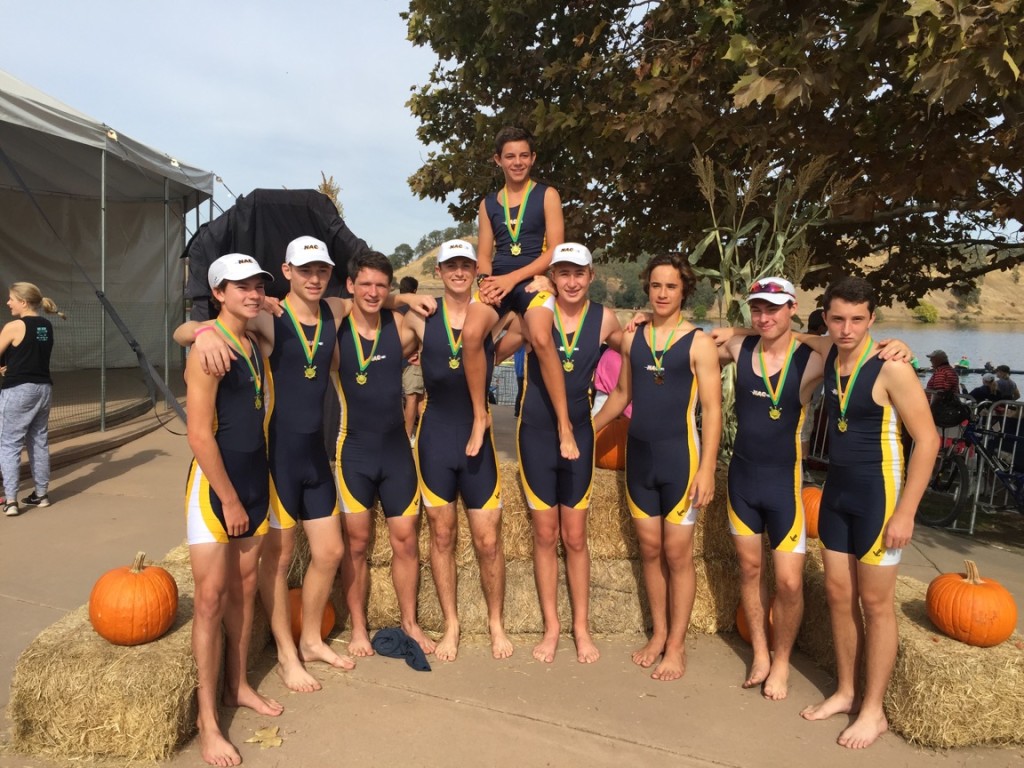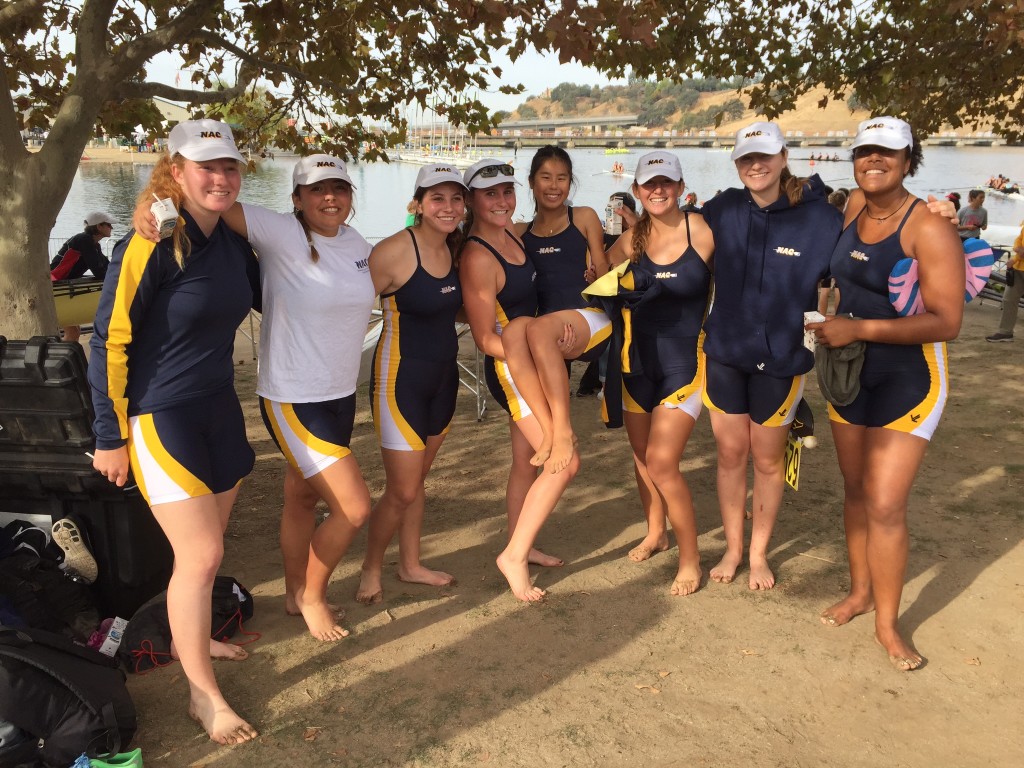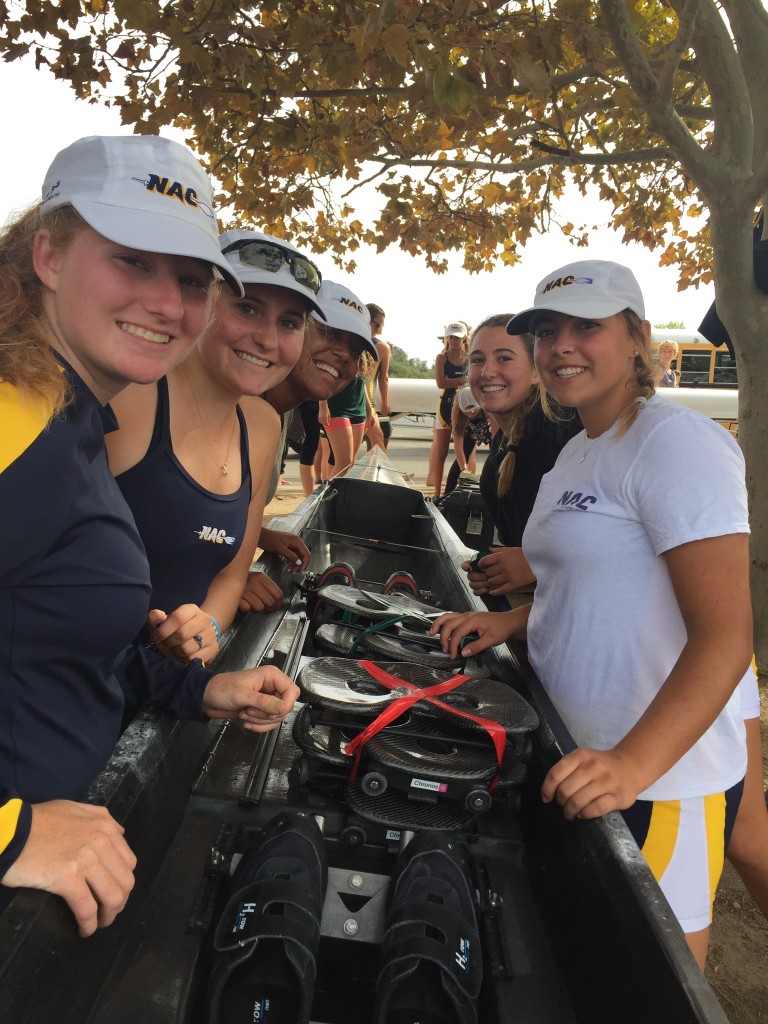![]()
COMMUNICATION
Information will be sent out by the NAC Junior Rowing Program via email. If you are not receiving emails, be sure to contact your coach to make sure that you are on the distribution list.


HELPFUL ROWING SITES
www.usrowing.org/About/Rowing101.aspx – All things rowing with an excellent glossary of rowing terms.
www.regattacentral.com – This is THE place to find the information on the upcoming races.
www.oarspotter.com – To learn which boats are from which schools and/or clubs.
www.concept2.com – Has training videos showing “erging”
row2k.com – Rowing info
Herenow.com – Race results

ROWING OVERVIEW
Rowing, sometimes referred to as Crew, is the ultimate “team” sport combining both individual performance with absolute teamwork. It is both mentally and physically demanding. Workouts are strenuous. It uses all the major muscle groups, and requires a great deal of aerobic ability, athleticism and dedication.
Rowing is a year round commitment. There are two seasons. The fall season runs from September to December. In the fall the focus is on technical training and physical conditioning and we participate in head races, with boats competing against the clock. The races are approximately 3.0 miles long or between 5000 and 6000 meters.
In the spring we compete in sprint races. The spring season runs from January to May with National Championships in June. The races are 2000 meters long with six boats racing side by side. Generally there are heats, which determine who gets to the finals, so there are multiple races in one day, or over the course of the weekend for larger events.
Our team travels throughout California to various regattas in the San Francisco Bay Area, Sacramento, Long Beach and San Diego. Because of the intensity of the sport, the team tends to be a tight knit group of friends providing a supportive and encouraging atmosphere. In addition to the values of teamwork and shared accomplishment, crewmembers learn to prioritize and manage their time well.
EQUIPMENT
Equipment Info: There are two types of rowing: Sweep Rowing and Sculling. In Sweep rowing each rower holds one oar, and their seats alternate out each side of the boat. Rowers are therefore referred to by their side, port or starboard. Two oars per rower is called Sculling.
The Boat: Boats, or shells, are made of fiberglass or carbon fiber, are 55-60′ long, weigh around 200lbs, and cost approx. $40,000n- $50,000 new.
The Oar: Never ever called a paddle. 12′ long hollow carbon with composite blade (the working part) Handles are polyurethane or wood. A set of eight oars cost approx. $4,000.
Riggers: Riggers are the aluminum devices that attach to the shell to hold the oar. They have an oarlock into which the oar is placed. The pin of the oarlock acts as a pivot point upon which the rower generates sufficient leverage to propel the boat. Riggers can be damaged by catching a crab, or by hitting them against immovable objects such as the sides of boathouse doors, boat racks, oar racks, boat trailers, signs, trees, cars, trucks, or other boats or their riggers. Replacement cost for riggers ranges approx. $300 – $400.
The Skeg: The skeg, or fin, is the tiny blade-like object beneath and to the stern of the boat. The skeg sits directly in front of the even tinier rudder, and the combined efforts of the two give the boat steerage. With out either one the boat is helpless and all but uncontrollable. The skeg is designed to turn tail and run at the first sign of trouble to prevent transferring energy into further damage to the hull. They cost approx. $45.
Cox Boxes: Each boat has speakers wired into it so that the coxswain may plug in a device called a Cox Box. This device allows them to be heard clearly down the length of the 60 foot boat through a microphone worn with a headband. It also provides information to the cox about what the crew is doing and cost approx. $550.00 each.
Other pricey equipment: Boat trailer for transport to regattas can cost up to $22,000. Four safety launches with 15hp motors, $17,000. 40 ergo meters for land training, $1,100. Ten various timing/GPS devices for the coaches/coxswains approx. $400.
The team tuition payment does not include new equipment costs and fundraising is an important part of our program
PRACTICE
Practice: Practice is held Monday thru Friday from 3:30-6:00 p.m.
Occasionally there is a Saturday practice, but generally the weekends are used for racing. The rowers show up, help set up, take down oars and boats or bring out ergs. It is important to be on time and be ready to go at the start of practice.
A typical practice will consist of a brief meeting with the coach and their crews to discuss the workout and set line-ups, 90 minutes on the water, or dry-land workout depending on the day, and then, a final meeting with the coach after the boats, or ergs have been put away.
Practice is mandatory. They athletes are being taught to be responsible for their commitments. The boat can’t go out without all eight rowers and a coxswain. If one rower fails to show, it could very well mean that eight others are stuck on land by his/her absence.
Clothing: Spandex rowing shorts (TROU) are required. Most rowers practice in t-shirts.
For Team Gear we have a specific time frame that our club can order through the on-line store with JL RACING. In the first two weeks of practice in the fall and spring season we have an organized clothing order for various NAC Crew gear; tees, sweats, hats, visors, sweatshirts, jackets, trou’s etc. It is important to have long sleeve athletic shirts and a lightweight water resistant jacket. The parkas are popular.
PUT YOUR CHILD’S NAME ON EVERYTHING!
REGATTAS
Regattas: Regattas are a time to celebrate and enjoy each other’s company. Feel free to be spirited and to CHEER for all of our NAC athletes at the event. There are NAC t-shirts, hats and visors available in the office and there will be other “parent team gear” available for the rowing parents soon. Check the racing schedule website the night before and print out a copy of the race schedule to keep with you at the regatta to follow all of the different races.
Be there on time. Parking can be an issue. Most regattas start at 6:00 a.m. and they last for several hours. It is best to be at the regatta from the start! Look for the Blue NAC pop-up tents. This is a great meeting spot and hospitality area. There will be coffee available for the parents and FOOD and water are supplied for all of the NAC athletes. There are not a lot of food options at the venues, so plan accordingly.
Most of the time, the athletes are required to be at the regatta for the entire event. They may be racing in one or more events and even when not racing or preparing to race, they are expected to be available to unload and rig boats, help cheer for their teammates, fill in for other injured or missing teammates in unexpected races, help de-rig, load trailers. At the Regional Championships, in Sacramento the athletes are shuttled back and forth to the hotel to rest between races.
The novice-racing season ends with the Southwest Regional Championships held in Lake Natoma, Sacramento usually on the first weekend in May. Some parents stay at The Lake Natoma Inn and rent bikes. The Hilton Garden Inn is also popular because it is a 10-minute nature walk to the venue. The Marriott is a 5-minute drive and there is a shuttle for parking. There are other accommodations nearby. Book early!
Overnight Regattas: The rowers may attend overnight regattas in the fall and in the spring. We charter commercial buses, travel as a team, and stay four to a room in hotels near the sites. The rowers may have to miss a day of school.
For the rowers: Your rower should bring:
- Healthy post workout snacks
- Hat/sunglasses and sunscreen.
- A gear bag: all kids need a securely close able bag that can hold all extra clothes
- Jackets/sweats that they wear in the cold of the morning and between races.
- Plastic bag for wet items
- LABEL SWEATS, JACKETS, ETC: Uniforms and gear all look alike!
For the Spectators: Here are some items you may want to bring to a regatta:
- Small cooler for snacks
- Chairs
- Binoculars
- A HAT and SUNSCREEN. There is not a lot of shade
- A book or an iPod
- Camera – We need photos for our end-of-season team banquet
- Rain gear
- Bicycles work well at many venues so you can see more of the race
Parent Volunteers: There are a variety of areas to help out; including food/or monetary donations for food at the regattas, regatta hospitality volunteers, team-building events or team dinners, parent mixers, photography and fundraising. Any fundraising ideas that would benefit the team are always welcome.There are many opportunities to help out this season. Just ask other volunteers what needs to be done, and offer to help. By volunteering to help, you will learn more about how the rowing program works than from any other source.
